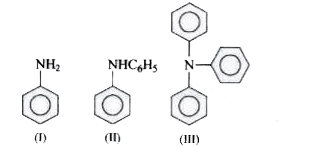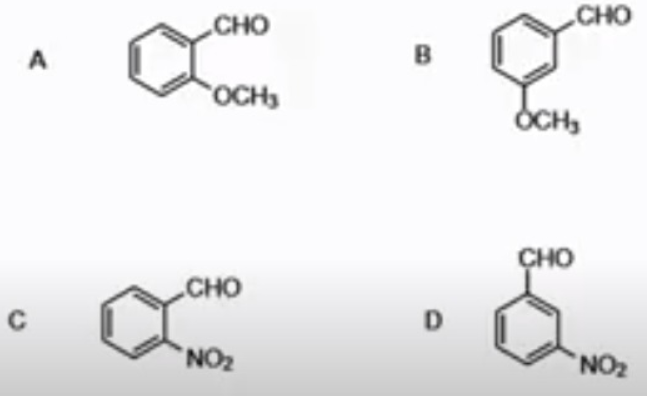Arrange the following:
He, Na, Mg (increasing order of melting point).
To arrange the elements He (Helium), Na (Sodium), and Mg (Magnesium) in increasing order of their melting points, we need to consider the type of bonding and the properties of each element.
1. Identify the Elements: We have three elements: Helium (He), Sodium (Na), and Magnesium (Mg).
2. Understand the Nature of Each Element:
- Helium (He): Helium is a noble gas and exists as individual atoms. It has very weak Van der Waals forces of attraction between its atoms, resulting in a very low melting point.
- Sodium (Na): Sodium is an alkali metal. It has metallic bonding, which is stronger than the forces in helium but weaker than that in magnesium. Therefore, it has a higher melting point than helium but lower than magnesium.
- Magnesium (Mg): Magnesium is an alkaline earth metal. It has strong metallic bonding due to the presence of more delocalized electrons compared to sodium, leading to a higher melting point.
3. Compare Melting Points:
- Helium has the lowest melting point due to weak Van der Waals forces.
- Sodium has a higher melting point than helium but lower than magnesium due to metallic bonding.
- Magnesium has the highest melting point because of its strong metallic bonding.
4. Arrange in Increasing Order: Based on the analysis above, we can arrange the elements in increasing order of their melting points:
- He (Helium) < Na (Sodium) < Mg (Magnesium)
Final Arrangement:
Increasing order of melting points: He < Na < Mg
- Helium (He): Helium is a noble gas and exists as individual atoms. It has very weak Van der Waals forces of attraction between its atoms, resulting in a very low melting point.
- Sodium (Na): Sodium is an alkali metal. It has metallic bonding, which is stronger than the forces in helium but weaker than that in magnesium. Therefore, it has a higher melting point than helium but lower than magnesium.
- Magnesium (Mg): Magnesium is an alkaline earth metal. It has strong metallic bonding due to the presence of more delocalized electrons compared to sodium, leading to a higher melting point.
- Helium has the lowest melting point due to weak Van der Waals forces.
- Sodium has a higher melting point than helium but lower than magnesium due to metallic bonding.
- Magnesium has the highest melting point because of its strong metallic bonding.
- He (Helium) < Na (Sodium) < Mg (Magnesium)
Increasing order of melting points: He < Na < Mg
Topper's Solved these Questions
- BOOK - ICSECHAPTER - THE PERIODIC TABLE EXERCISE - TOPIC 1 Modern Periodic Table and its Periodicity (1 Mark Questions )25videos
THE PERIODIC TABLE
- BOOK - ICSECHAPTER - THE PERIODIC TABLE EXERCISE - TOPIC 1 Modern Periodic Table and its Periodicity (2 Marks Questions )50videos
THE PERIODIC TABLE
- BOOK - ICSECHAPTER - THE PERIODIC TABLE EXERCISE - TOPIC 2 Studying Individual Groups (5 Marks Questions)34videos
THE PERIODIC TABLE
- BOOK - ICSECHAPTER - THE LANGUAGE OF CHEMISTRYEXERCISE - EXCERCISE 1(C ) (Correct the following statement)21videos
THE LANGUAGE OF CHEMISTRY
- BOOK - ICSECHAPTER - WATEREXERCISE - TOPIC 2 Solution (5 MARKS QUESTIONS)5videos
WATER
Similar Questions
Knowledge Check
- Question 1 - Select One
Arrange the following in increasing order of basicity.
 AI<II<IIIBIII<I<IICIII<II<IDII<III<I
AI<II<IIIBIII<I<IICIII<II<IDII<III<I - Question 2 - Select One
Arrange the following in increasing order of basicity :
 AS<Q<R<PBS<Q<P<RCS<R<P<QDP<Q<R<S
AS<Q<R<PBS<Q<P<RCS<R<P<QDP<Q<R<S - Question 3 - Select One
Arrange the following in increasing order of stability.
 AI<II<IIIBII<I<IIICI<III<IIDII<III<I
AI<II<IIIBII<I<IIICI<III<IIDII<III<I
Arrange the following in the increasing order of their acidity.
 View Solution
View SolutionArrange the following
Li, K, Na, H [In the decreasing order of their ionization potential].View SolutionArrange the following in increasing order of acidic strength
 View Solution
View SolutionArrange the following in increasing order of dielectric constant :
View SolutionArrange the following in increasing order of rate of Nitration:
 View Solution
View Solution


